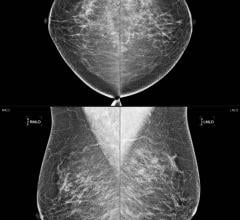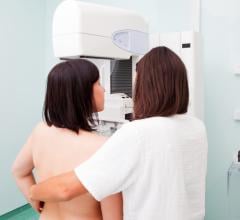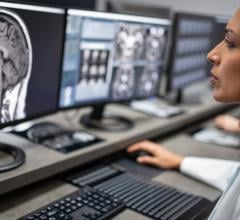April 5, 2011 – Uterine fibroid embolization—an interventional radiology treatment for noncancerous growths that develop in the muscular wall of the uterus—improves a number of women's lower urinary tract problems that are specifically caused by those fibroids. The finding was announced by researchers at the Society of Interventional Radiology's 36th Annual Scientific Meeting in Chicago.
"Uterine fibroid embolization or UFE continues to be an outstanding treatment choice for women with uterine fibroids, and—based on this study—this nonsurgical treatment improves related urinary tract problems," said James B. Spies, M.D., MPH, FSIR, professor and chair of the radiology department at Georgetown University Medical Center in Washington, D.C. "Fibroids can cause a variety of unpleasant, life-disrupting urinary symptoms for women, such as bladder frequency, urgency and the need to urinate during the night—and UFE can significantly improve these symptoms and daily life for women.”
He explained that uterine fibroids are the most frequent indication for hysterectomy in premenopausal women, and more than 300,000 women have this surgery performed annually in the United States to treat symptomatic uterine fibroids. "This research shows that minimally invasive uterine fibroid embolization effectively reduces fibroid-related urinary symptoms in women and should therefore be offered as a treatment choice,” Spies said. “Women need to know their options and make treatment choices that are right for them, knowing confidently that uterine fibroid embolization is an option to hysterectomy and myomectomy. Women who have uterine fibroids need to have a frank discussion about their treatment options with their gynecologists, urogynecologists, primary care providers and interventional radiologists to determine their best treatment option—especially if their urinary symptoms, such as urinary frequency and/or urgency, stress incontinence and urinary retention, are put in the background and not addressed initially.”
Uterine fibroids are benign tumors in the uterus that can cause prolonged, heavy menstrual bleeding that can be severe enough to cause anemia or require transfusion, disabling pelvic pain and pressure, urinary frequency, pain during intercourse, miscarriage and interference with fertility. Twenty to 40 percent of women age 35 and older have uterine fibroids of a significant size. African-American women are at a higher risk for fibroids: as many as 50 percent have fibroids of a significant size. Previous studies have already shown UFE, also referred to as uterine artery embolization or UAE, to be a safe and effective treatment compared to hysterectomy.
However, UFE offers less risk, less pain and a shorter recovery time compared to surgery, said Spies. It blocks tiny blood vessels that feed fibroids, causing the tumor to die and symptoms to subside. An interventional radiologist uses imaging to guide a thin catheter to the uterine artery and then releases tiny particles, the size of a grain of sand, into blood vessels feeding the fibroid, cutting off its blood flow and causing it to shrink and its symptoms to subside. UFE is a safe, effective, established treatment that has been widely available for years and is covered by insurance.
For the first time, researchers confirmed that uterine fibroid embolization does indeed control and relieve many lower urinary tract problems—such as urinary frequency and/or urgency and urinary retention—using standardized measures of urinary symptoms, said Spies. This prospective study included 46 women (average age of 44) with symptomatic fibroids who had lower urinary tract symptoms and underwent uterine fibroid embolization between March 2008 and May 2010. All subjects underwent a pre-procedure pelvic MRI and completed validated questionnaires that measured urinary distress and impact, pelvic organ/urinary incontinence/sex, uterine fibroid symptoms and quality of life. They also completed a standardized 48-hour bladder diary (preoperatively and three months after the treatment).
At three months after treatment, the women indicated an improvement in most urinary symptoms. Bladder diaries showed a significant reduction in the number of total voids at day and night. Uterine volume, dominant fibroid size, location or bladder compression did not affect the degree of improvement in urinary distress scores. However, researchers found no difference in incontinence episodes, stress incontinence or urge incontinence scores before and after the procedure.
For more information: www.SIRweb.org


 July 29, 2024
July 29, 2024 








